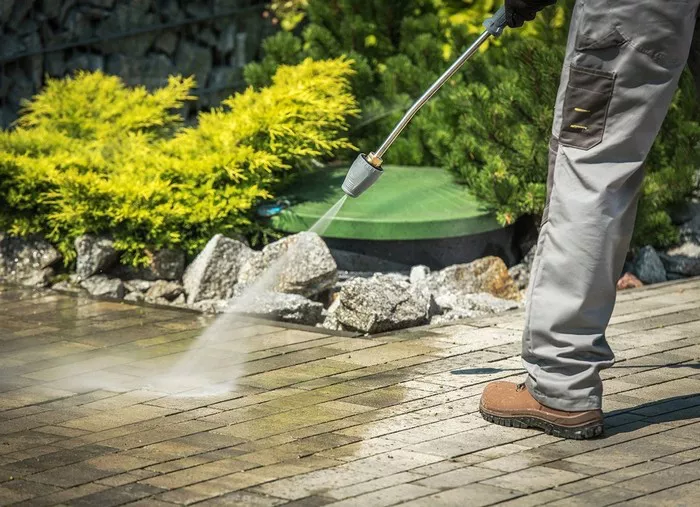Pressure washers are powerful tools for cleaning a variety of surfaces, from driveways to decks, but they require careful handling to ensure effective results without causing damage or injury. Whether you’re a seasoned professional or a DIY enthusiast, adhering to a set of dos and don’ts is essential for maximizing the benefits of your pressure washer while minimizing risks. Let’s delve into the dos and don’ts of pressure washer usage to help you achieve exceptional cleaning results safely and efficiently.
Dos:
1. Read the Manual: Before operating your pressure washer, invest time in thoroughly reading the manufacturer’s manual. Understanding the specific features, settings, and safety precautions of your model is crucial for safe and effective use.
2. Wear Protective Gear: Prioritize safety by donning appropriate protective gear such as goggles, gloves, and closed-toe shoes. This gear shields you from debris and high-pressure water, reducing the risk of injuries during operation.
3. Inspect the Area: Conduct a comprehensive inspection of the area you intend to clean. Remove any obstacles, loose objects, or debris that could be propelled by the pressure washer, potentially causing damage or injury.
4. Use the Right Nozzle: Selecting the correct nozzle for the task at hand is paramount. Different nozzles offer varying spray patterns and pressure levels. Begin with a wider spray pattern for delicate surfaces and gradually transition to narrower patterns for tougher cleaning jobs.
5. Maintain Distance: Maintain a safe distance between the nozzle and the surface being cleaned. Start from a distance and gradually move closer until you find the optimal distance for effective cleaning without causing damage.
6. Test in an Inconspicuous Area: Before commencing full-scale cleaning, conduct a test in a small, inconspicuous area to gauge the pressure washer’s impact and ensure it won’t cause damage or discoloration to the surface.
7. Clean in a Consistent Pattern: Adopt a systematic approach to cleaning by utilizing consistent patterns, such as overlapping strokes. This technique ensures even cleaning, minimizing streaks or missed spots for a pristine finish.
8. Use Detergents Wisely: If employing detergents or cleaning solutions, adhere to the manufacturer’s recommendations and dilution ratios. Apply the detergent evenly, allow it to dwell for the specified duration, and rinse thoroughly for optimal results.
9. Proper Maintenance: Regular maintenance is key to prolonging the lifespan and performance of your pressure washer. Clean the nozzle, inspect hoses for damage, and adhere to the recommended maintenance schedule outlined in the manual.
10. Store Safely: After each use, store the pressure washer in a dry, well-ventilated area away from children and pets. Follow any specific storage instructions provided by the manufacturer to prevent damage and ensure longevity.
Don’ts:
1. Don’t Use Incorrect Nozzles: Avoid using the wrong nozzle for the job, as this can result in inefficient cleaning or damage to surfaces. Refer to the manual to select the appropriate nozzle for each cleaning task.
2. Don’t Point at People or Pets: Never direct the pressure washer nozzle towards people, pets, or yourself. The high-pressure water can cause serious injury, so exercise caution and always point the nozzle away from living beings.
3. Don’t Use on Fragile Surfaces: Refrain from using pressure washers on delicate or fragile surfaces such as wood siding, asphalt roofing, or painted surfaces unless you possess experience and understand the appropriate pressure and technique to prevent damage.
4. Don’t Ignore Safety Precautions: Disregarding safety precautions outlined in the manual can lead to accidents or injuries. Ensure proper grounding, adhere to electrical safety guidelines, and avoid electrical hazards at all times.
5. Don’t Spray Near Electrical Outlets or Fixtures: Steer clear of spraying water near electrical outlets, fixtures, or appliances to mitigate the risk of electrical shock or damage. Exercise caution and maintain a safe distance from electrical sources.
6. Don’t Use Hot Water in the Pump: Unless your pressure washer is specifically designed for hot water use, avoid using hot water as it can damage the pump and other components. Stick to cold water usage unless otherwise instructed by the manufacturer.
7. Don’t Overlook Maintenance: Neglecting routine maintenance tasks can result in decreased performance, premature wear, and costly repairs. Follow the maintenance schedule outlined in the manual to keep your pressure washer operating smoothly.
8. Don’t Operate Without Proper Ventilation: Pressure washers emit exhaust fumes, so avoid operating them in enclosed or poorly ventilated areas to prevent carbon monoxide poisoning. Prioritize safety by ensuring adequate ventilation during operation.
9. Don’t Leave Unattended: Never leave a running pressure washer unattended, especially if it’s in close proximity to children, pets, or vulnerable objects. Supervise its operation at all times to prevent accidents or misuse.
10. Don’t Dispose of Wastewater Improperly: Be mindful of environmental regulations when disposing of wastewater from pressure washing. Contaminants in the wastewater can harm the environment, so refrain from allowing it to enter storm drains or natural waterways without proper filtration or treatment.
By adhering to these dos and don’ts of pressure washer usage, you can achieve superior cleaning results while safeguarding yourself, your property, and the environment. Prioritize safety, follow manufacturer guidelines, and exercise caution at all times to make the most of your pressure washing endeavors.

